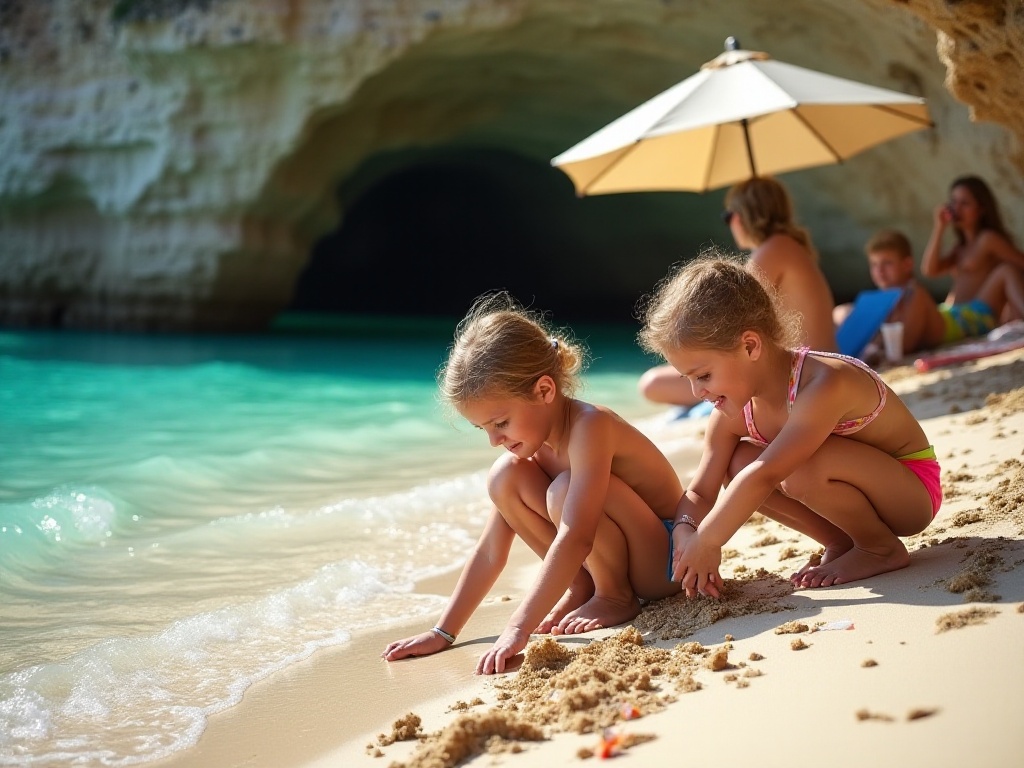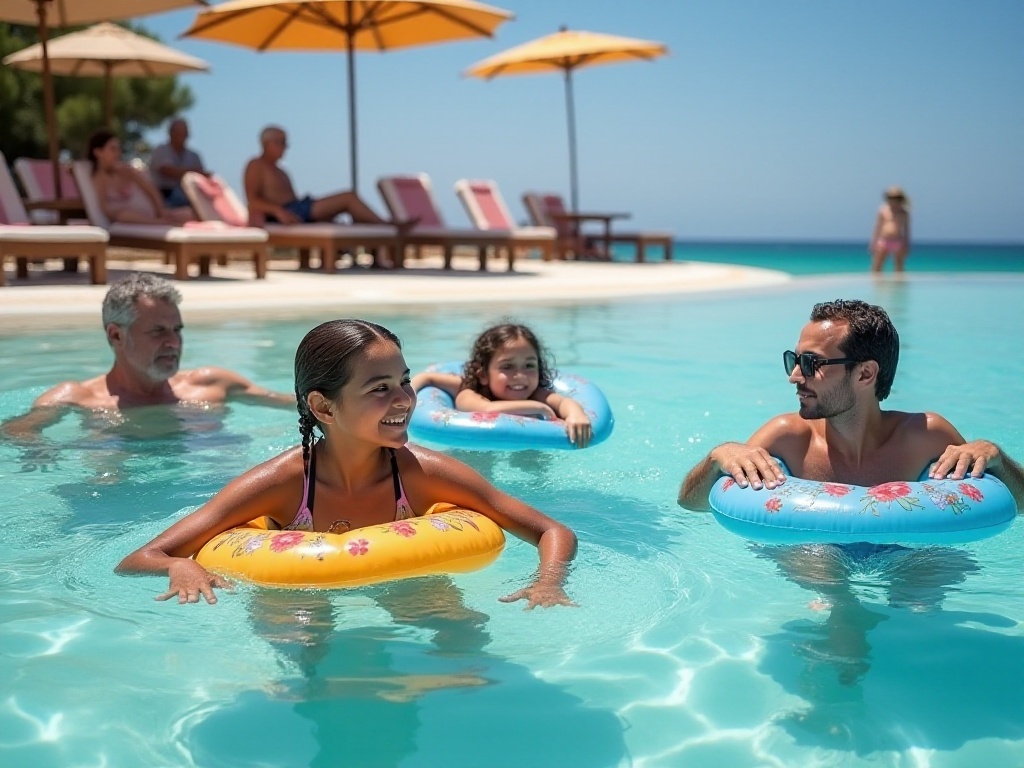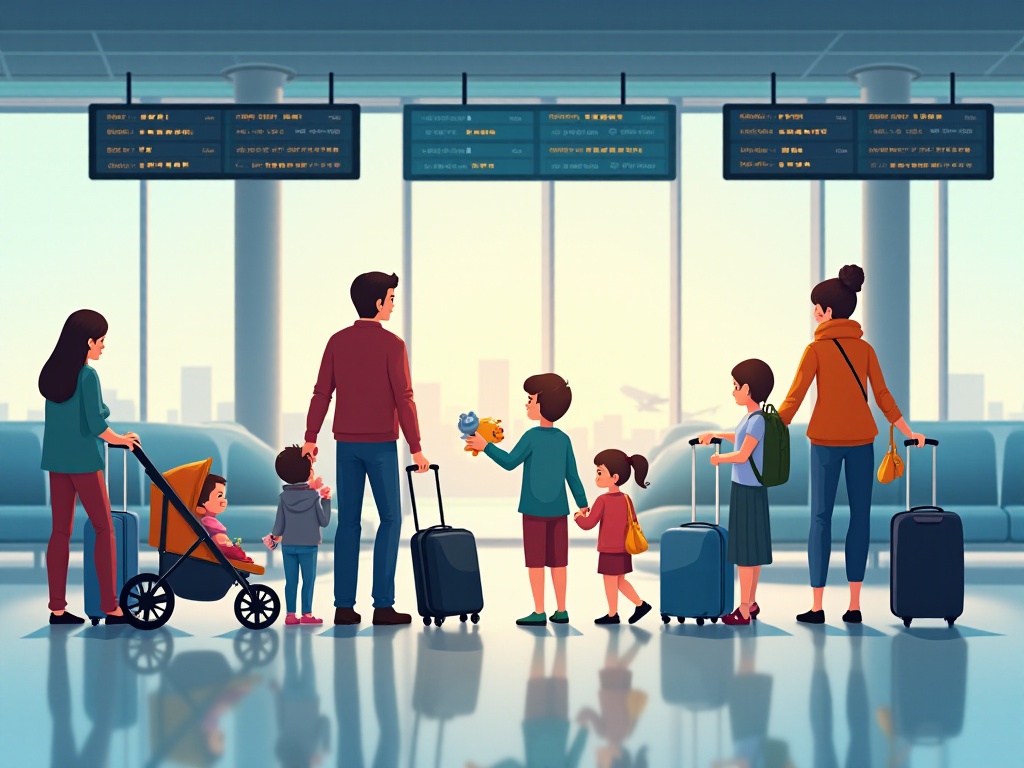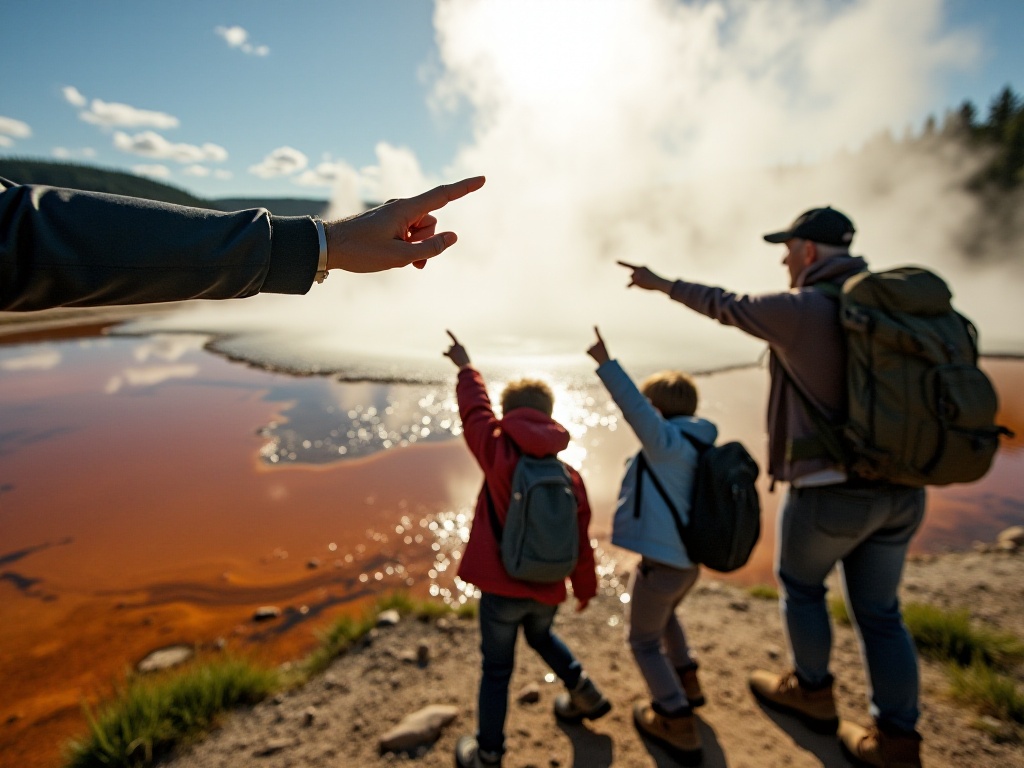Pre-trip Preparation
As a mom who frequently travels with children, I deeply understand the challenges of traveling with infants and toddlers. I remember my first trip to Sanya with my 6-month-old baby - just packing the luggage was overwhelming. After years of experience, I've developed a methodology for traveling with kids that I'd like to share with everyone today.
First, it's important to understand that when traveling with infants and toddlers, you must slow down. Your previous style of dawn-to-dusk, checkpoint-style travel needs to completely change. An infant's daily routine is crucial, and we need to plan our itinerary around the baby's biological clock.
For example, if my baby needs to sleep for an hour at 9 AM and 3 PM, we need to avoid planning activities during these times. Imagine being in the middle of enjoying an attraction when suddenly your baby gets cranky and needs to sleep - it really kills the mood. That's why I recommend choosing hotels close to attractions, so you can return quickly when the baby needs rest.
Before departure, definitely take your baby for a medical check-up, especially for international travel. Before our trip to Japan last year, we did a complete check-up and found that the baby had a mild cold. We treated it before departing, avoiding the hassle of illness abroad. According to World Health Organization data, the probability of infants and toddlers getting sick during international travel is 15%, with respiratory infections accounting for 40%. That's why medical check-ups are so important.
Packing Preparation
Packing is truly an art. On my first trip, I brought a huge suitcase but ended up not using half of the items. Now I pack based on factors like trip duration, destination climate, and accommodation conditions.
Here's my essential packing list:
Medical supplies: fever reducers, cold medicine, anti-inflammatory drugs, bandages, gauze, thermometer, etc. Statistics show that the most common issues when traveling with infants are fever (30%) and diarrhea (25%), so these medicines are essential.
Protective items: sunscreen (SPF30+), mosquito repellent, baby lotion. Did you know that baby skin is 1/3 the thickness of adult skin? That's why sun protection is especially important.
Safety items: outlet covers, bed rails, portable night light. Hotel safety facilities are often inadequate. These small items can make rooms more infant-friendly. Studies show that 80% of hotel rooms have various safety hazards, making these protective measures necessary.
Transportation Choices
For transportation, I recommend choosing based on journey length. For trips under 4 hours, driving is ideal as you can stop whenever needed for the baby. For longer journeys, flying is actually better.
When flying, remember to select seats on the airline's website 24 hours in advance. I usually choose seats near the bathroom for convenient diaper changes. During takeoff and landing, ensure the baby sucks on a pacifier or drinks water to help with ear pressure. Statistics show over 60% of infants experience ear pain during flights.
For train travel, I recommend booking sleeper cars. Though more expensive, the comfort is worth it. From my experience, sleeper cars have more stable temperatures and less noise than regular seats, making them more suitable for infants.
Accommodation Strategies
When choosing accommodation, location is the primary consideration. I typically choose hotels within 15 minutes of major attractions for convenient travel. Room size should be at least 25 square meters to give babies enough space to move around.
Many might think five-star hotels are the best choice, but in my experience, four-star hotels with family rooms might be more suitable. These hotels usually provide cribs, sterilizers, kettles, and other facilities at more reasonable prices. According to Ctrip data, over 70% of families traveling with children choose four-star hotels with family rooms.
Remember to confirm if the room has a bathtub. Bathtubs are safer and more convenient than showers for bathing babies. Also verify if the carpets are regularly cleaned, as babies may crawl on the floor.
Itinerary Planning
For itinerary planning, I suggest: schedule one main attraction in the morning, then rest or do light activities in the afternoon. Limit daily activities to 4-6 hours, giving babies plenty of rest time.
For example, when we took our baby to Yunnan last year, we planned only one major attraction per day. When visiting Dali Ancient City, we'd leave at 9 AM, explore until 11 AM, then return to the hotel for rest. We'd go out again after 3 PM when it was cooler, perhaps for a walk by Lake Erhai. This pace doesn't tire out the baby, and adults can enjoy themselves too.
Keep meal times consistent and avoid letting babies get too hungry. I carry easily stored snacks like fruit puree and cookies. Studies show 90% of infants experience decreased appetite while traveling, so paying attention to nutrition is crucial.
Emergency Plans
As they say, plans don't always go as expected. Having an emergency plan when traveling with infants is inevitable. I recommend preparing contingency plans before departure.
First, understand the medical resources at your destination. I mark nearby children's hospitals on my phone in advance. Statistics show about 25% of families traveling with infants need medical attention.
Second, prepare sufficient spare clothes and diapers. I recommend at least 3 sets of change clothes per day and 30% more diapers than usual.
Third, prepare anti-loss measures. You can put contact information bracelets on babies or sew contact information inside their clothes. While it might seem excessive, safety comes first. Police statistics show that 80% of children lost in tourist areas are under 5 years old.
Equipment Selection
Regarding infant travel equipment, strollers are most important. After trying many types, I found foldable lightweight strollers most practical. Weight should be under 5kg, and they should fold to fit in luggage or be carried onto planes.
Baby carriers are also essential. Sometimes when attraction paths are poor and strollers aren't useful, carriers become crucial. Choose carriers considering weight capacity and breathability, preferably waterproof.
Portable bed rails are very useful. Many hotel beds are quite high, and bed rails prevent babies from rolling off. Consider portability and installation difficulty when choosing.
Mindset Adjustment
Finally, let's talk about mindset. When traveling with infants, adjusting your expectations is crucial. Don't expect to visit all attractions like before; instead, enjoy the slower pace of family time.
I remember our first trip to Zhangjiajie with the baby. We originally planned to see all core attractions in three days. We quickly realized this was unrealistic and only visited Tianmen Mountain and the Grand Canyon. Looking back, though we saw fewer attractions, watching our baby's curiosity about nature brought priceless happiness.
According to a survey of families traveling with infants, 85% of parents reported significantly improved parent-child relationships after travel. So rather than pursuing quantity of attractions, slow down and enjoy precious time with your child.
What do you think is the biggest challenge when traveling with infants and toddlers? Please share your experiences and concerns in the comments. Let's exchange ideas to make traveling with children more relaxed and enjoyable.








